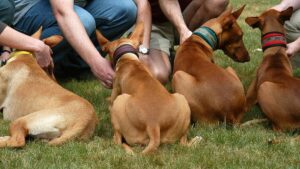
A Lot of Dog in a Plain Brown Wrapper
Discover the elegant athleticism of Pharaoh Hounds – from coat to character, an insightful guide to assessing this versatile breed.

Home » Dog Breeds » Pharaoh Hound Dog Breed
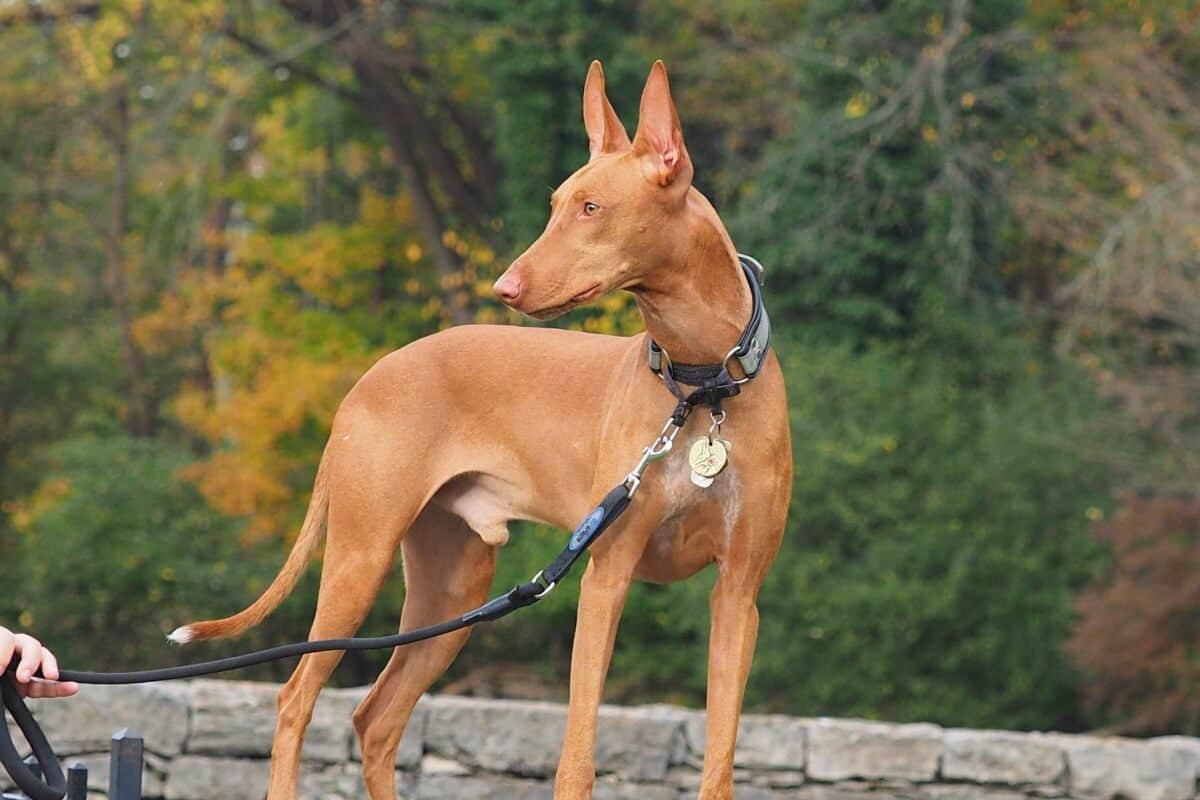
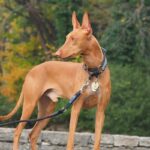
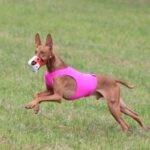
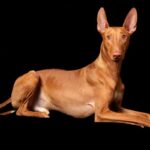
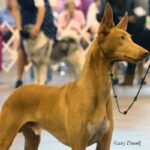
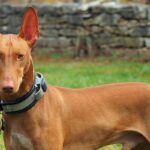
The Pharaoh Hound, an ancient and regal breed, holds a position of distinction in the world of purebred dogs. Though its name suggests an Egyptian origin, the breed has been associated with the Mediterranean island nation of Malta for centuries. Its original name, Kelb tal-Fenek, translates to “Rabbit Dog,” which speaks to this dog’s ability to pursue its prey with ease. Elegant in appearance and noble in demeanor, the “Pharaoh” is a national treasure in its native land today and a beloved companion wherever it is found.
Hound
21 – 25 Inches
45 – 55 Pounds
12 – 14 Years
| Country of Origin | Malta |
|---|---|
| Bred For | Rabbit Hunting, Companionship |
| Known For | Affection, Grace, Speed |
| Popularity | Low |
| Temperament | Intelligent, Active, Affectionate, Alert |
| Activities | Hunting, Running, Hiking, Conformation Shows, Dog Sports |
The Pharaoh Hound, with its noble and ancient lineage, invites intrigue and admiration from canine enthusiasts and historians alike. As its name suggests, this breed is associated with the pharaohs of ancient Egypt, and it is not hard to envision this graceful hound alongside royalty. In many ways, the Pharaoh is a living relic, bearing a striking resemblance to hieroglyphic images and artifacts that date back thousands of years.
While many believe the Pharaoh originated in Egypt, recent genetic studies indicate that its roots are more closely linked to the island of Malta. Known as Kelb tal-Fenek in Maltese, which translates to “rabbit dog,” the breed was historically used by Maltese hunters to chase rabbits across the island’s rocky terrain. Its keen senses and agile physique made it a formidable and cherished hunting companion to the island’s farmers.
The Pharaoh Hound remained relatively isolated on Malta for centuries. It was only in the 20th century that the breed began to gain recognition outside the Maltese archipelago. British servicemen stationed in the country during the 1960s were among the first to appreciate the breed’s unique attributes. They played a pivotal role in introducing the Pharaoh to the United Kingdom. The breed’s introduction to the United States followed shortly thereafter.
As for official recognition, the Pharaoh Hound has achieved recognition from several prestigious canine organizations. The American Kennel Club (AKC) formally recognized the breed in 1984, while the Fédération Cynologique Internationale (FCI) and The Royal Kennel Club (UK) have also bestowed the honor, celebrating the breed’s distinct characteristics and historical significance through full recognition.
The Pharaoh Hound’s journey from ancient Egypt to the Maltese islands, and onto the world stage, is a testament to its enduring appeal and timeless elegance. Today, while it may no longer roam palaces or participate in hunts as fervently as it once did, the Pharaoh remains a cherished companion that is revered for its history, speed, and beauty.
Adult male Pharaoh Hounds typically stand between 23 to 25 inches tall at the shoulder, while mature females generally measure from 21 to 24 inches in height.
In terms of weight, adult Pharaoh Hounds usually range from 45 to 55 pounds.
The Pharaoh Hound’s height-to-length ratio represents an almost square proportion. This result is a framework that supports both speed and agility, crucial traits for a breed historically used for hunting on the rocky slopes of Malta and its sister islands. Substance-wise, the breed is not bulky or heavy-set. Instead, it has a lean and muscular build, underscoring its role as a swift and efficient hunter.
Texture: The coat of the Pharaoh Hound is short and close-fitting, with a fine texture and glossy shine. A slightly longer and harsher coat is acceptable; however, a length that produces feathering is not. Puppies can have a longer, fuller coat, but this will eventually be replaced by the short, close adult coat. Color in the adult Pharaoh varies from a beige/tan to chestnut to a rich, red/copper.
| Standard Color | |
|---|---|
| Chestnut | ee |
| Red Golden | ee |
| Rich Tan | ee |
| Tan | ee |
Markings: White Markings
A Note About Color: The coat’s color tends to deepen as the dog matures, although paler shades are acceptable in the adult. A white tail tip and white on the chest (referred to as “the star”) are desired, and white on the toes and a slim white strip on the centerline of the face are acceptable. White hairs on any other parts of the body are unacceptable, although a gray muzzle is typical of older Pharaohs.
The Pharaoh Hound’s tail is strong at the base and tapers towards the tip. It is medium-set and follows the topline, reaching below the point of the hocks. When relaxed, the tail hangs naturally, with a slight curve. In moments of excitement or when the dog is in motion, it is raised higher and curved.
The Pharaoh uses its tail for balance during high-speed pursuits, making it an essential tool for this agile hunter. In terms of appearance, the tail often carries white hair on its tip, which can be a helpful feature for tracking these dogs during daytime and nighttime hunts.
Steeped in history and radiating elegance, the Pharaoh Hound is not just a pet but a companion with a rich legacy. Owning one of these hounds is an experience filled with many rewards and a few challenges. As a potential owner, it’s crucial to understand the breed’s unique needs and attributes to establish and maintain a harmonious relationship.
The Pharaoh Hound is generally a healthy and robust breed, with a strong lineage that has been preserved over centuries. The breed’s lean and athletic build serves it well, offering a degree of resistance to some common canine ailments.
Lifespan: With proper care, a Pharaoh Hound typically enjoys a lifespan ranging between 12 and 14 years. However, as with all dogs, lifespan can be influenced by a variety of factors, including genetics, the quality of healthcare provided, diet and nutrition, and the conditions of the dog’s immediate environment.
Like all dog breeds and mixed breeds, the Pharaoh Hound, despite its robust constitution, is not entirely immune to health issues. Understanding these potential risks can equip owners to take preventive measures and provide the best care possible.
While the Pharaoh Hound is generally a healthy breed, being cognizant of potential health risks is vital. Regular veterinary check-ups, combined with an owner’s keen observation, can go a long way towards ensuring early detection and timely intervention.
The Pharaoh Hound, renowned for its unusual elegance, possesses a personality that is both charming and multifaceted. Those who share their homes with this breed often find themselves captivated by its endearing quirks and its noble bearing.
For novice dog owners, the Pharaoh can be an agreeable companion, but it is worth noting that this hound’s spirited nature may require a bit more patience and understanding. The breed is known for its sensitivity and often forms deep bonds with its family, being keenly attuned to the emotions of each member of the household. This sensitivity, while making the dogs wonderfully empathetic companions, also means they might not always appreciate being left alone for extended periods.
When it comes to canine companions, the Pharaoh Hound usually gets along well with other dogs, especially if introduced to them at a young age. The breed’s social nature often sees these dogs enjoying play sessions with their fellow canines, although, like any dog, individual temperaments can vary.
Families with young children will find that the Pharaoh, with proper introduction and supervision, can be a gentle and patient playmate. However, it is essential to teach children how to approach and handle a dog to ensure all interactions are harmonious.
When it comes to meeting strangers, the Pharaoh Hound’s reactions can range from aloofness to polite curiosity, depending on individual temperament and socialization. Proper introductions and positive experiences can help with shaping a balanced response during introductions.
Nurturing a Pharaoh Hound’s health and vitality significantly hinges on the quality of nutrition it receives. This breed’s unique dietary needs reflect its athletic build and active lifestyle, demanding a careful balance of nutrients to sustain its energy and maintain its svelte figure.
For Pharaoh Hound puppies, the dietary focus should be on supporting their rapid growth and development. Puppies usually require food that is richer in proteins and fats, supporting their muscle development and providing the energy necessary for their playful antics. It’s advisable to feed a Pharaoh Hound puppy multiple small meals throughout the day to support their faster metabolism and smaller stomach capacity.
Transitioning to adult food should be gradual, typically around the age of one year. Adult Pharaoh Hounds, with their lean and muscular build, require a balanced diet that caters to their active nature. Proteins from high-quality sources, such as lean meats, are essential to maintain muscle mass. The amount of food necessary will depend on the dog’s age, activity level, and metabolism. On average, an adult Pharaoh Hound might require anywhere from two to three cups of high-quality dry food daily, split into two meals.
It’s essential to monitor the dog’s weight and adjust the food portions accordingly. Overfeeding can lead to obesity, which in turn can precipitate various health issues. Conversely, underfeeding can result in malnutrition. Regular weight checks and consultations with a veterinarian can guide optimal feeding routines.
Fresh water should always be readily available to keep the Pharaoh Hound hydrated, especially after physical activities.
The Pharaoh Hound, with its keen intellect and independent nature, presents a unique set of challenges and rewards in the realm of training. While they are quick learners, their strong-willed disposition requires a handler with patience, consistency, and an understanding of positive reinforcement techniques.
Training a Pharaoh Hound is most effective when started at a young age. Early socialization and exposure to varied environments, people, and other animals can help shape a well-rounded and confident adult dog. Their sensitive nature means they respond best to positive reinforcement methods, such as treats, praises, or play. Harsh corrections or punitive measures can be counterproductive and might cause the dog to become wary or withdrawn.
When it comes to vocalization, the Pharaoh Hound is not typically known to be excessively barky. However, they might raise an alert when they notice something unusual or feel the need to communicate. Training can help moderate this behavior and ensure they bark only when necessary.
One trait that potential Pharaoh Hound owners should be aware of is their high prey drive. This breed’s ancient history as hunters means they have a natural instinct to chase. This “wanderlust potential” means they might take off after a squirrel, bird, or other small animals. Thus, a secure yard and leash training are essential to prevent any unexpected escapades.
Their intelligence is evident, but it comes paired with a sense of independence. While they can grasp commands quickly, they might occasionally display a selective hearing attitude, choosing when they want to obey. Consistency in training is the key to overcoming this trait.
The breed’s athletic lineage is evident in its lithe build and enthusiastic approach to physical activities. These dogs possess a boundless energy reservoir that needs regular outlets to ensure they remain both physically and mentally stimulated.
| Energy Level | Medium to High |
|---|---|
| Exercise Requirements | 1 Hour/Day (Minimum), Daily Walks, Vigorous Running, Regular Exercise, Playing with Another Dog, Mental Stimulation |
When it comes to their exercise needs, the Pharaoh Hound thrives on activities that engage both their body and mind. Daily walks, preferably a mix of brisk walking and occasional sprints, cater well to their nature. They also appreciate the opportunity to run freely in a secure area, where they can indulge their high-speed chasing instincts without any restraints.
The energy level of the Pharaoh Hound is considerably high, reflecting its ancient role as a hunting companion. As a result, merely a leisurely stroll around the block might not suffice. Engaging them in more strenuous activities, such as fetching, agility courses, or even long-distance jogging, can be beneficial in channeling their energy productively.
In terms of intensity, while they certainly have bursts of high activity, they’re equally adept at lounging gracefully beside their owner once their exercise needs are met. Their playfulness is another facet of their personality that shines through during play sessions, making interactive toys or games a hit with this breed.
However, it’s essential to be mindful of the conditions in which you’re exercising your Pharaoh Hound. Their short coat means they might be more susceptible to extreme temperatures, both cold and hot. In particularly hot weather, it’s advisable to schedule exercise sessions during cooler parts of the day, such as early morning or late evening, to prevent overheating.
Grooming the Pharaoh Hound is relatively straightforward due to its short, sleek coat, which lies close to the body. However, regular grooming sessions play a dual role in not only maintaining the dog’s appearance but also promoting its overall health.
| Coat Type | Short, Glossy, Slightly Harsh |
|---|---|
| Grooming Requirements | Weekly Brushing, Occasional Bathing, Routine Ear Cleaning, Periodic Nail Trimming, Regular Tooth Brushing |
The Pharaoh Hound’s coat is notably easy to groom. Weekly brushing using a soft bristle brush or a rubber grooming mitt is sufficient to remove loose hair and maintain the coat’s natural shine. This breed is not known for excessive shedding, but like all dogs, they do shed some hair year-round. Regular brushing can help manage and reduce the amount of hair left around the home.
Additionally, these grooming sessions offer an excellent opportunity to check the dog’s skin for any signs of irritation, infections, or parasites like fleas and ticks. Early detection can lead to prompt treatment, ensuring the dog’s comfort and health.
While their coat is low maintenance, other aspects of grooming, such as nail trimming, ear cleaning, and dental care, should not be overlooked. Their nails should be trimmed regularly, especially if they don’t naturally wear down. Overly long nails can cause discomfort or even lead to injuries. Checking their ears for signs of wax buildup, redness, or a foul odor is vital to prevent potential infections. Dental care, either through brushing or dental chews, can help prevent gum disease and bad breath.
Bathing the Pharaoh Hound is required infrequently, only when they get particularly dirty or start to develop a doggy odor. Their short coat dries quickly, making the bathing process hassle-free.
Living with a Pharaoh Hound is a unique experience that intertwines the dog’s ancient lineage with the contemporary demands of a modern household. Understanding and addressing their specific needs will foster a harmonious coexistence and showcase the best traits of this elegant breed.
In terms of accommodation, Pharaoh Hounds can adapt to various living spaces, including apartments. However, if residing in confined spaces, it’s paramount that they receive adequate exercise to expel their inherent energy. While they certainly cherish moments of lounging, they equally crave opportunities to stretch and sprint. A home with a securely fenced yard would be an advantage, allowing them spontaneous play without risks. If a yard isn’t available, scheduled walks and play sessions are a must.
Weather considerations play an integral role in the care of a Pharaoh Hound. Their fine coat provides limited protection against extreme weather conditions. During colder months, they might require added warmth in the form of jackets or sweaters when venturing outdoors. On the flip side, in warmer climates or during peak summer, care must be taken to protect them from overheating. It’s advisable to avoid prolonged sun exposure and ensure they always have access to fresh water and shaded areas.
While Pharaoh Hounds possess an independent streak, they are by no means solitary creatures. They form strong attachments to their human families and can become distressed if left alone for extended periods. Engaging toys or interactive puzzles can be beneficial when you’re away, but consistent companionship is essential. Integrating them into daily activities, whether it’s a family movie night or a weekend hike, ensures they feel connected and valued.
The allure of Pharaoh Hound puppies is undeniable. With their earnest eyes and playful demeanor, the pups can captivate hearts instantaneously. Yet, beneath their charming exterior lies a hunting hound with a distinct set of characteristics. Navigating their early stages of life demands an understanding of their breed-specific needs, ensuring they mature into well-rounded adults that can thrive in the modern world.
Raising a Pharaoh Hound puppy requires dedication, patience, and knowledge. These puppies are energetic, curious, and keen to explore their surroundings. Providing each one with a safe environment for discovery and play is essential. Puppy-proofing the home by removing potential hazards and providing the pup with appropriate toys can help channel its natural curiosity in a positive direction.
Socialization is a crucial aspect of a Pharaoh Hound puppy’s development. Introducing the youngster to various people, animals, sounds, and environments during the formative weeks and months can shape its temperament while ensuring it grows up to become a well-adjusted adult. Positive early experiences can prevent the development of unfounded fears or aggressive behaviors later in life.
Nutrition plays a pivotal role during this growth phase. A balanced diet, specifically formulated for puppies, ensures the young Pharaoh receives all the essential nutrients required for its rapid growth and development. It is essential to follow feeding guidelines and consult with the hound’s breeder and a veterinarian to ascertain the best diet plan that allows for adjustments as the puppy grows.
Training should commence at an early age. While Pharaoh Hound puppies are known for their intelligence, they also possess an independent streak. Utilizing positive reinforcement techniques and being consistent with commands can yield the best results. Early training sessions should be short and engaging to keep the puppy’s attention.
Regular veterinary check-ups are a cornerstone of puppy care. These appointments will not only ensure the Pharaoh Hound puppy is growing appropriately, they also provide a structured schedule for vaccinations and deworming, and they allow time to address any potential health concerns.
The Pharaoh Hound, with its heritage rooted in hunting and chasing, naturally exhibits a spirited zest for physical activity. Engaging these hounds in various pursuits not only stimulates their physical and mental faculties, it also strengthens the bond between the hound and its handler. Here are some dog sports that are particularly well-suited for the breed:
Engaging a Pharaoh Hound in these activities and sports not only caters to their active disposition but also fosters a deeper understanding and bond between the dog and its handler. Whether pursuing competitive accolades or simply seeking mutual enjoyment, these pursuits epitomize the dynamic spirit of the Pharaoh Hound.
The Pharaoh Hound is recognized by the world’s leading registries and kennel organizations, which categorize the breed into a specific Group based on its unique characteristics. This breed is recognized worldwide under the following Group designations:
| Organization | Group Designation |
|---|---|
| AKC (American Kennel Club) | Hound |
| UKC (United Kennel Club) | Sighthound and Pariah Dog |
| CKC (Canadian Kennel Club) | Hounds |
| ANKC (Australian National Kennel Council) | Hounds |
| RKC (The Royal Kennel Club) | Hound |
| FCI (Fédération Cynologique Internationale) | Group 5: Spitz and Primitive Types; Section 6: Primitive Type |
The ideal Pharaoh Hound is described by a Breed Standard that is approved by each of the world’s leading registries and kennel organizations. The Breed Standards for this breed may be found in the following links:
| Organization | Breed Standard |
|---|---|
| American Kennel Club | AKC Pharaoh Hound Breed Standard |
| United Kennel Club | UKC Pharaoh Hound Breed Standard |
| Canadian Kennel Club | CKC Pharaoh Hound Breed Standard |
| Australian National Kennel Council | ANKC Pharaoh Hound Breed Standard |
| The Royal Kennel Club | RKC Pharaoh Hound Breed Standard |
| Fédération Cynologique Internationale | FCI Pharaoh Hound Breed Standard |
For enthusiasts, breeders, and owners of the Pharaoh Hound, various clubs and organizations around the world are dedicated to the breed’s welfare, promotion, and preservation. These clubs not only play a pivotal role in upholding breed standards but also foster a sense of community among Pharaoh Hound aficionados.
In the United States, the Pharaoh Hound Club of America (PHCA) stands as the foremost authority on the breed. Established with the primary goal of ensuring the breed’s integrity, the PHCA organizes various events, educational seminars, and health initiatives tailored specifically for Pharaoh Hounds and their owners.
In the United Kingdom, the Pharaoh Hound Club (UK) has played a pivotal role in the breed’s promotion since its establishment in 1968. Recognized by The Kennel Club, this organization not only upholds breed standards but also is a hub for sharing knowledge, experiences, and the latest developments related to Pharaoh Hounds.
Being a part of these clubs offers numerous benefits. From gaining access to a wealth of knowledge and resources to connecting with fellow Pharaoh Hound enthusiasts, members are equipped with everything they need to celebrate and care for this magnificent breed.
The Pharaoh Hound, with its distinct elegance and historical significance, is a breed that captures the hearts of many. However, like all dog breeds, there are times when these hounds need a helping hand. Rescue groups and organizations play an invaluable role in ensuring that Pharaoh Hounds in distress find loving, forever homes.
In the United States, the Pharaoh Hound Club of America (PHCA) plays an instrumental role in the rescue and rehoming of Pharaoh Hounds. While the club’s primary mission revolves around the promotion and preservation of the breed, it also maintains a dedicated rescue arm. Collaborating with shelters, breed enthusiasts, and volunteers, the PHCA ensures that Pharaoh Hounds in need receive the requisite care, rehabilitation, and ultimately, placement in loving, forever homes.
In the United Kingdom, the Pharaoh Hound Club (UK), besides its primary focus on breed promotion, also engages in rescue and rehoming efforts. Their network, built over decades, ensures that Pharaoh Hounds in the UK receive timely aid and find suitable homes.
Pharaoh Hounds are not inherently aggressive. They possess a gentle and friendly disposition, making them amiable companions. However, like all dogs, early socialization and consistent training are essential to curb any undesirable behaviors.
Yes, Pharaoh Hounds make excellent family dogs. They are known for their affectionate nature and they bond closely with their families, including children. Their playful and gentle temperament, combined with their loyalty, makes them a great fit in most family settings.
No breed is truly hypoallergenic, and Pharaoh Hounds are no exception. While they have a short coat that can produce less dander than some other breeds, potential owners with allergies should spend time around the breed to determine their individual reactions.
Yes, one of the most endearing traits of Pharaoh Hounds is their ability to “blush.” When they are excited, happy, or pleased, the skin on their nose and ears can turn a rosy pink shade, giving the appearance of blushing.
Pharaoh Hounds do shed, though it’s generally considered to be minimal. Their short, fine coat requires regular brushing to remove loose hairs and to maintain its sleek appearance. Regular grooming can also help with reducing the amount of hair around the house.
Pharaoh Hounds are not as commonly seen as many other breeds, especially in certain parts of the world. Originating from Malta, they have a rich history but are considered more of a rare breed in countries like the United States.
Absolutely. Pharaoh Hounds are known for their loving and affectionate nature. They tend to form strong bonds with their families and seek out attention and companionship, making them delightful pets to have around.
Pharaoh Hounds are intelligent and eager to please, which can make training more straightforward. However, they also have an independent streak, so consistent, positive reinforcement methods work best. Early socialization and puppy training classes can be beneficial to guide them towards becoming well-behaved adults.

Discover the elegant athleticism of Pharaoh Hounds – from coat to character, an insightful guide to assessing this versatile breed.
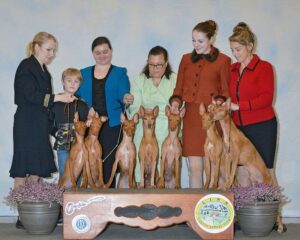
Cheryl McDermott is the breeder of Kr’Msun Cirnechi dell’Etna & Pharaoh Hounds. Read about the kennel’s beginnings, the puppies, and more!

Insights from the Professional Handler, Bekki Pina. Read about her opinions on various topics about dog handling in the modern show ring.
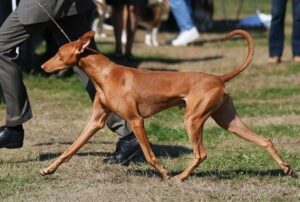
Quick hit on several overarching elements of the Pharaoh Hound Breed Standard by the PHCA Judges’ Education Committee.
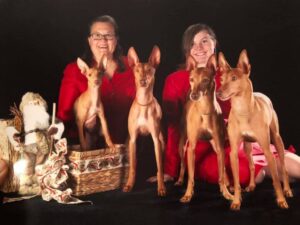
Interview with Hound Group Breeders Cheryl McDermott DVM & Emily Kerridge – Kr’msun Cirnechi dell’Etna & Pharaoh Hounds
The best way to ensure a long and happy relationship with a purebred dog is to purchase one from a responsible breeder. Not sure where to begin?
Contact the National Parent Club’s Breeder Referral Program, which is listed on the AKC Breeder Referral Contacts page.
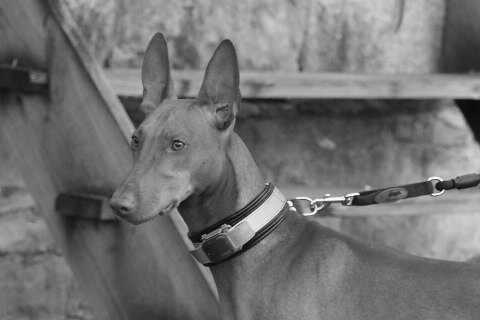

"*" indicates required fields
Showsight Magazine–the world’s most influential purebred dog publication since 1992. Each issue reaches a global audience dedicated to preserving the history and health of purpose bred dogs. Filled with award-winning editorial focused on news and insights from the dog show community, top breeders, handlers, AKC Judges, and more!